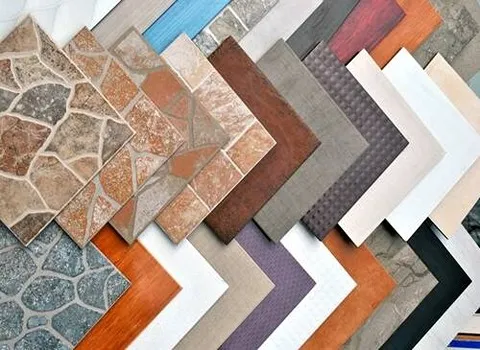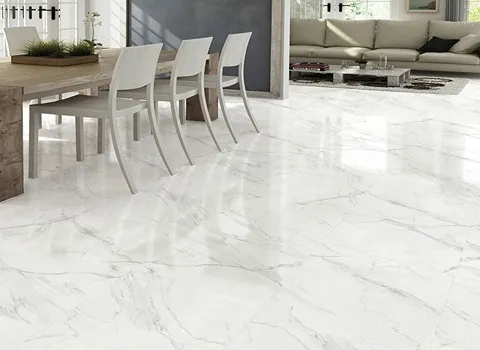
Understanding Ceramic Tile Specifications
Before purchasing ceramic tiles in bulk, it is essential to familiarize yourself with the key specifications that determine their quality, appearance, and performance.
Here are some important factors to consider:
1. Tile Size and ShapeCeramic tiles come in a variety of sizes, ranging from small mosaic tiles to large format tiles.
The most common sizes include 12x12 inches, 24x24 inches, and rectangular tiles like 6x24 inches.
The shape of the tile, whether square, rectangular, or hexagonal, can also impact the overall look of the installation.
2. Tile Thickness
The thickness of ceramic tiles can vary depending on their intended use.
Thin tiles are typically used for wall installations, while thicker tiles are more suitable for floors and high-traffic areas.
The standard thickness of ceramic tiles ranges from 1/4 inch to 3/4 inch.
3. Tile Finish
Ceramic tiles come in various finishes, such as glossy, matte, textured, and polished.
Each finish offers a different aesthetic appeal and can affect the tile's slip resistance and maintenance requirements.
For example, glossy tiles are easy to clean but may be slippery when wet, while matte tiles provide better traction but can show dirt more easily.
4. Tile Material
The material composition of ceramic tiles can influence their durability, water resistance, and suitability for specific applications.
Common types of ceramic tile materials include porcelain, ceramic, and terracotta.
Porcelain tiles are the most durable and water-resistant, making them ideal for high-moisture areas like bathrooms and kitchens.
5. Tile Grade
Ceramic tiles are graded based on their quality and manufacturing standards.
The most common grading system includes Grade I (light-duty), Grade II (medium-duty), and Grade III (heavy-duty), with Grade III tiles being the most durable and suitable for commercial applications.

Benefits of Buying Ceramic Tiles in Bulk
Purchasing ceramic tiles in bulk offers several advantages for homeowners, contractors, and interior designers.
Here are some key benefits of buying tiles in large quantities:
1. Cost Savings
One of the primary advantages of buying ceramic tiles in bulk is the cost savings associated with volume discounts.
Suppliers often offer lower prices per tile when purchased in large quantities, allowing buyers to save money on their overall project costs.
2. Consistent Quality
Buying tiles in bulk ensures that you have a consistent supply of the same product throughout your project.
This can be especially important for large-scale installations that require a uniform look and quality across multiple spaces.
3. Time Efficiency
By purchasing ceramic tiles in bulk, you can streamline the procurement process and reduce the time spent on sourcing and ordering individual tiles.
This can help expedite project timelines and ensure that you have an adequate supply of tiles when needed.
4. Flexibility in Design
Buying tiles in bulk gives you the flexibility to experiment with different layouts, patterns, and design concepts.
Whether you are creating a custom mosaic or a uniform floor pattern, having a surplus of tiles allows you to explore creative possibilities without worrying about running out of materials.
5. Reduced Environmental Impact
Bulk purchases of ceramic tiles can help minimize packaging waste and transportation emissions associated with multiple small orders.
By consolidating your tile purchases, you can contribute to sustainable practices and reduce your project's carbon footprint.

How to Buy Ceramic Tiles in Bulk
When purchasing ceramic tiles in bulk, it is essential to follow a systematic approach to ensure a smooth and successful transaction.
Here are some practical tips to help you buy ceramic tiles in bulk efficiently:
1. Research Suppliers
Start by researching reputable suppliers who offer bulk purchasing options for ceramic tiles.
Look for suppliers with a wide selection of tile products, competitive pricing, and positive reviews from past customers.
Consider reaching out to multiple suppliers to compare prices and services.
2. Request Samples
Before placing a bulk order, request samples of the ceramic tiles you are interested in to assess their quality, color accuracy, and finish.
This will allow you to make an informed decision and ensure that the tiles meet your expectations before committing to a large purchase.
3. Calculate Quantity
Determine the total quantity of ceramic tiles needed for your project by measuring the area to be tiled and accounting for waste, cuts, and replacements.
It is recommended to order a surplus of tiles to accommodate any breakage or future repairs, typically adding 10-15% to your initial quantity calculations.

How to Buy Ceramic Tiles in Bulk
When purchasing ceramic tiles in bulk, it is essential to follow a systematic approach to ensure a smooth and successful transaction.
Here are some practical tips to help you buy ceramic tiles in bulk efficiently:
1. Research Suppliers
Start by researching reputable suppliers who offer bulk purchasing options for ceramic tiles.
Look for suppliers with a wide selection of tile products, competitive pricing, and positive reviews from past customers.
Consider reaching out to multiple suppliers to compare prices and services.
2. Request Samples
Before placing a bulk order, request samples of the ceramic tiles you are interested in to assess their quality, color accuracy, and finish.
This will allow you to make an informed decision and ensure that the tiles meet your expectations before committing to a large purchase.
3. Calculate Quantity
Determine the total quantity of ceramic tiles needed for your project by measuring the area to be tiled and accounting for waste, cuts, and replacements.
It is recommended to order a surplus of tiles to accommodate any breakage or future repairs, typically adding 10-15% to your initial quantity calculations.

